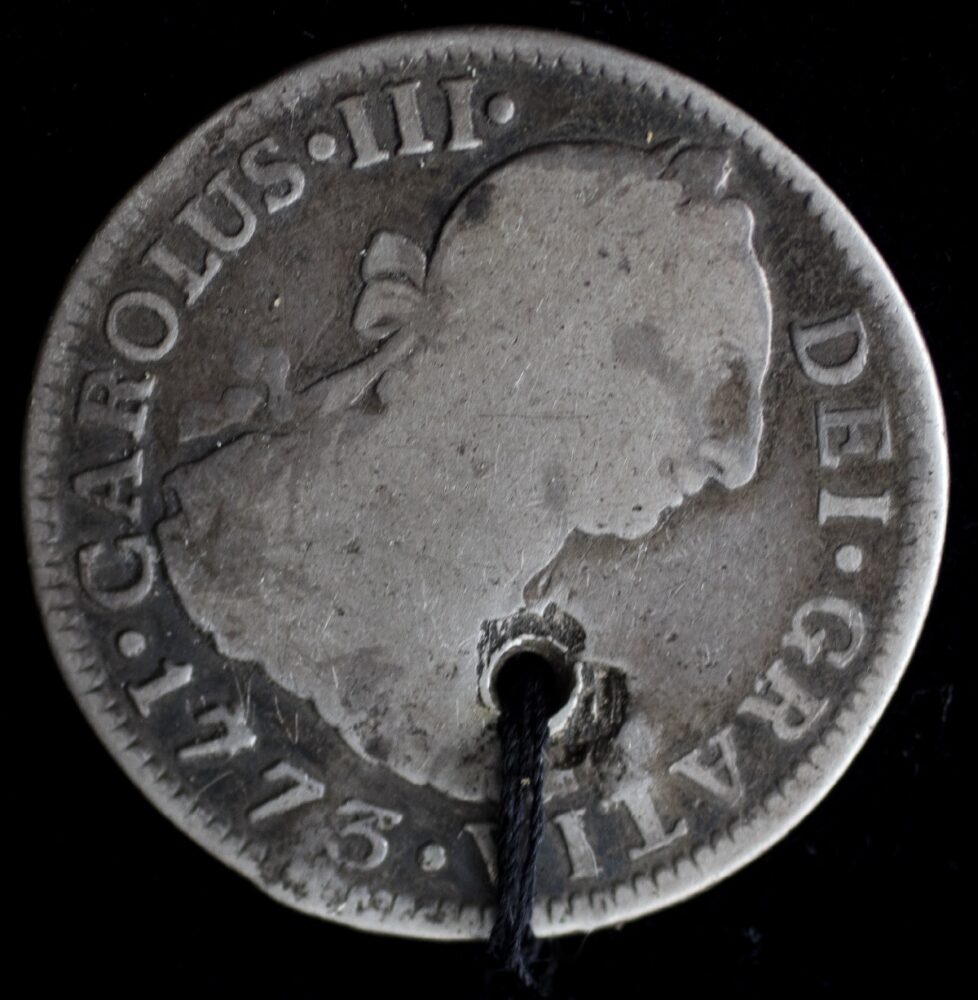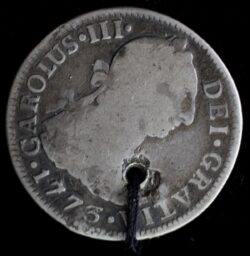Summer 2021
Realms of the Coin
Spanish coins for luck, comfort, health, and protection.
Published: May 28, 2021
Last Updated: August 31, 2021

1811 Kid Ory Historic House
Spanish King Carlos III graces a coin from the 1811 Kid Ory Historic House collection.
Continuing, Sublette points out that the strength of Spanish currency intensified with the establishment of New World silver mines, mints, and the development of the quicksilver refining process. Spain’s currency made it an essential tool of empire. Sublette states “it was for centuries the closest thing the world had to a standard monetary unit.” Indeed, Thomas Jefferson recognized the power of Spain’s hard currency in his “Notes on the Establishment of a Money Unit, and of a Coinage for the United States,” published in 1784. Jefferson advocated for the Spanish dollar to be the inspiration for American currency but divided decimally rather than in eighths.
In many communities of enslaved people throughout the American South, this tool of empire found itself repurposed as a medium of self-expression and adornment. Archaeologists have studied pierced coins in the collections at Poplar Forest, an estate owned by Jefferson in Virginia. These coins were pierced and strung as pendants to be worn on the neck, wrist, or ankle. The researchers found historical sources suggesting pierced coins were used as items of good luck, a defense against disease, and a source of spiritual comfort and protection. Another use was as a teething object to soothe toddlers.
At the 1811 Kid Ory Historic House in LaPlace, our exhibit, Tools of Empire, contains two dozen pierced coins discovered at river parish plantation sites. Judging by the mint dates of the coins in our collection, wearing pendant coins was common from the 1770s through the early 20th century; the oldest coin in the display is a 1773 Spanish picayune, the most recent a 1904 American coin. This diversity of dates suggests the cultural retention of this practice ranged over a century and perhaps well beyond; a recent visitor to our exhibit noted seeing pendant coins on people in Louisiana as late as the 1940s. Learn more and plan a visit at 1811kidoryhistorichouse.com.
